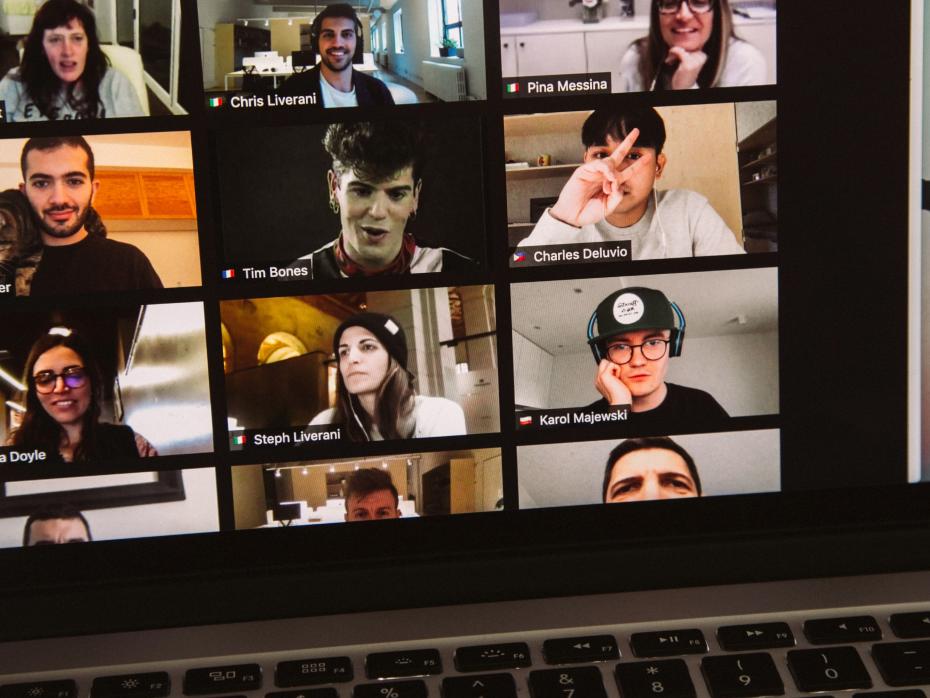The challenge
The sudden shift from face-to-face to online classes has forced many in higher education to rethink and redesign their teaching practices to deliver classes from home, often without proper technical support.
A significant challenge for university teachers has been their lack of the pedagogical content knowledge (PCK) needed for teaching online. Such knowledge includes technical and administrative aspects of teaching online such as using digital platforms and tools and organising workflows. It also includes the pedagogical principles needed to design for, and facilitate, meaningful online learning experiences.
The Covid-19 crisis has brought forth a plethora of advice, much of it focused on tools and materials teachers can use to replace their face-to-face classes, but often without the context needed to judge what will work where.
To address this, Chrysi Rapanta presented four online teaching experts with many years collective experience with five questions in order to shed light on effective approaches to digital course design and implementation - we have condensed the answers below:
1. In what aspects do you think online learning design and delivery is different from face-to-face teaching and learning?
Good online teaching requires careful student-centred design ahead of any classes taking place. It shifts the focus of classes from teacher and subject matter to student and activity-based learning.
Online learning is more reliant on materials (text, video, exercises) than direct personal interaction (discussion, presentation).
To be effective, it requires clear communication and instruction from teachers as there is less opportunity for refinement through interaction.
Extra communication channels are needed so instructors can get key messages to all students, be aware of their needs and make it easy for students to talk to one another, sharing experiences and tips. At least one channel or chatroom should be private to the students with no teacher access.
Remote students are more autonomous, so online courses should offer flexibility, making students the owners of their learning process.
Evaluation and assessment require a total overhaul of traditional exams with continuous evaluation or a separation of formative and summative evaluations.
Greater empathy is needed for students struggling to adapt to new modes of learning, the stress of pandemic and associate upheaval of "normal" life. Loss of face-to-face behavioural cues means that teachers must be more proactive in touching base with students.
2. What do you think makes online teaching and learning successful?
Student-centred design: thinking about what students will have to do to learn. Focusing on content can result in poor-quality video, which will not achieve its goal, while focusing on what learners will do puts them in motion and creates opportunities to help them learn.
Proper task analysis: thinking about the practicalities of students’ situations and how they will interact with, say, a text, video or podcast. If students cannot easily print, avoid sending a 30-page text, for example. It is advisable to acquire some knowledge of learners’ needs, aptitudes and abilities. Hosting a welcome forum or activity can help instructors get to know the learners and establish class rapport.
Flexibility: enable students to find a balance with their own "new normal" by, for instance, allowing flexi-time, asynchronous classes and avoiding several hours in a row of videoconferencing. Also, allow for customisation of the curriculum so that you can offer personalised learning pathways and individualised support.
Active involvement of learners: encourage student co-design of learning activities. Enabling students to modify tasks teachers set for them and reconfigure learning environments, recommended tools and resources and working relationships will boost their engagement and foster self-regulation. Instructors can construct guiding questions and discussion prompts to encourage probing, interrogating, critiquing and relating to content and other learners.
Effective planning: chunking and pacing content, designing a schedule of assignment due dates and setting a regular schedule for activities makes progress easier for students and teachers.
Learning is social: we learn from and with others, even if at a distance. Teachers should be present online by providing timely and accurate feedback, both on questions and evaluations, alongside video lectures and seminars. Individualised feedback is a powerful learning engine.
Excellent communications skills: set well-explained tasks with clear rationales and listen carefully to what students are saying about their experiences, what is working well for them and what is not. Working online, a challenge is the loss of normal face-to-face cues, so learners and instructors must work harder to pick up on and correctly interpret the cues available.
Promote peer contact and collaboration: this should be formal and informal, through group assignments or by introducing peer-teaching or peer-assessment.
Wise use of technology: use learning analytics to shape course design decisions and monitor student progress. Always think about the pedagogical purpose first, then select the technology that will support this.
Learner prep: help students prepare themselves to engage in online learning with a welcome message setting out the structure, types of assignments and tips for success prior to the course start date.
3: What would you say to non-expert colleagues who follow a materials-based approach to online teaching?
Good teachers are mediators between the content and the learners. They create pathways so that everyone can learn, whatever their cognition, motivation and self-esteem. When we are online, materials alone cannot provide the mediation, a teacher is needed to provide guidance, feedback, answer questions, monitor student progress and much more.
If a course offered only pre-prepared materials, with no dialogue, feedback or opportunity for teachers to adapt, then the risks of failure would be high and struggling students will go unnoticed.
Nonetheless, good materials are a key ingredient in online teaching and should be accurate and accessible to students and support the appropriate level of autonomy.
4: What would you say to colleagues who follow a tools-based approach to online teaching?
Very often, institutions and educators start thinking about the tool first rather than the pedagogical issues. The pedagogical purpose must come first, then the tool chosen to support it.
Tools such as videoconferencing can offer useful ways to engage in live interaction (Q&A, feedback, project reviews) but should not be used as a vehicle to move face-to-face teaching content online, such as hour-long lectures, without redesigning the style of teaching and content to suit the tool being used.
5. What are some effective ways of monitoring students’ engagement and learning during online courses? How can they inform assessment?
Continuous assessment is key in online education, so collecting information in the form of work, artefacts and reflections that can be measured against competence performance criteria throughout the course is crucial.
Teachers can monitor students’ activities and ongoing progress via the Learning Management System (LMS) – so-called learning analytics. This means identifying key indicators and setting up a way to measure and control them. Key indicators could be downloading a text, posting to a forum, logging in and accessing the course at least once a week. If these indicators are properly defined and communicated to students, they can form part of an ongoing evaluation.
The use of ePortfolios, for example, is a strategy that is highly recommended for online education. It allows the students to collect evidence of their learning and reflect about it and the teacher to facilitate the monitoring of the process.




comment